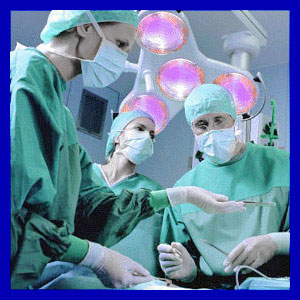
Endoscopic neck surgery comes is several forms with a variety of objectives. Endoscopic spinal surgery causes less damage to healthy tissues and can still achieve the therapeutic goal of treatment. Therefore, endoscopic techniques are much preferred over conventional dorsal incision spinal operations that feature more risks, more discomfort and far longer recovery times.
Endoscopic surgical approaches revolutionized the invasive care sector decades ago. They continue to improve and be applied with the help of ever-evolving surgical tools to accomplish many different types of minimally invasive care. The endoscopic neck surgeries performed today can treat virtually every kind of diagnosed spinal pathology and should be investigated by all patients who are considering undergoing any type of neck surgery.
This essay details the application of various types of endoscopic techniques when performing neck surgery.
Endoscopic Neck Surgery Objectives
Endoscopic neck surgery can be used to fulfill a variety of surgical goals including any of the following treatment objectives:
Endoscopic surgery can reduce or eliminate areas of focal spinal stenosis from within the central vertebral canal space.
Endoscopic surgery can increase the patency of the neuroforaminal spaces and remove compression of a pinched nerve root.
Endoscopic surgery can be used to treat a wide range of disc pathologies, including bulging and ruptured intervertebral structures that might be theorized to cause spinal cord compression, spinal nerve root compression or chemical radiculitis in the neck.
Endoscopic surgery might be applicable to treat cases of abnormal curvature of the neck, including cases of scoliosis, lordosis and rare cervical kyphosis.
Endoscopic surgery can be utilized to correct vertebral migration, such as cervical spondylolisthesis, as well as resolve significant and possibly migrated neck fractures.
Endoscopic surgery can also be custom-tailored to specific surgical needs, such as treating cysts, tumors or cancers in the great neck anatomy.
Endoscopic Procedures
Endoscopic cervical discectomy is certainly the most common type of minimally invasive neck surgery. These procedures have been utilized for a long time already as the industry standard level of care for pathological disc conditions in the neck which require surgical intervention. Discectomy can be used to remove degenerated discs or herniated discs partially or completely, treating cases of degenerative disc disease or neck pain caused by intervertebral herniation.
Endoscopic IDET and nucleoplasty are the normal forms of these treatments and are used mostly for contained disc bulges that are deemed to be compressing nerve tissues in the neck.
Endoscopic laminectomy uses innovative surgical tools to access and treat the central space inside the vertebral column, resolving various forms of stenotic blockages and spinal canal narrowing issues.
Endoscopic spinal fusion and corpectomy are newer techniques that can perform these dramatic forms of neck surgery with less collateral damage to health tissues. However, since these procedures are inherently traumatic to the overall spine unto themselves, we still caution patients to avoid these types of care unless they are absolutely necessary to preserve life or neurological functionality.
Basically, endoscopic surgery can be used to perform almost any type of neck surgery, as the tools available now can be customized to accomplish a wide range of surgical objectives for diagnosis and treatment.
Endoscopic Neck Surgery Advantages
Endoscopic technology allows procedures to be performed with the help of precise surgical tools that are placed through tiny incisions inside catheters. The endoscope allows a perfect field of vision within the body so that the surgeon does not have to actually see the area to be treated by exposing it via large incision. Instead, the scope views the inside of the body and treats the condition with the surgeon viewing the entire procedure on a virtual-reality headset or monitor.
Endoscopic techniques cause less trauma to the neck anatomy and create far less collateral damage to healthy tissues that would otherwise suffer from large, traditional incisions. Endoscopes can be placed into virtually any area of the neck without dissecting muscles, damaging nerves or disturbing circulatory vessels, making them ideal for treating such a small and vital anatomical location.
Endoscopic techniques are ideal for both diagnostic (exploratory surgery) and treatment applications and are known to heal much faster than all forms of traditional incisions-based operations.





